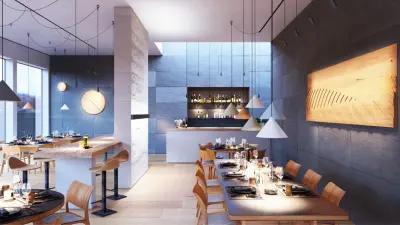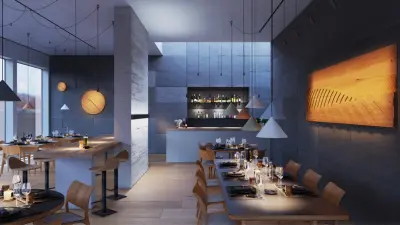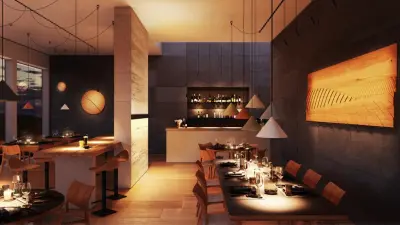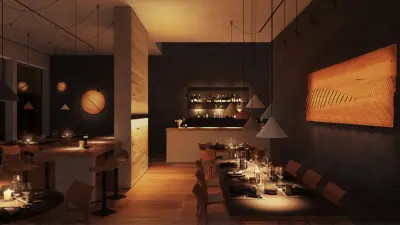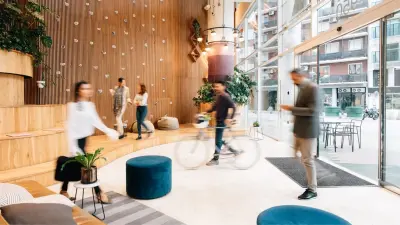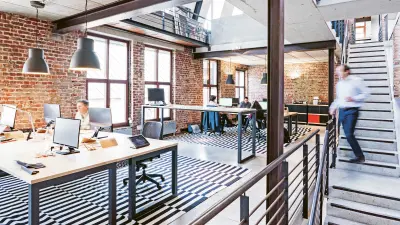Put in the right light
How lighting in buildings affects our health and wellbeing
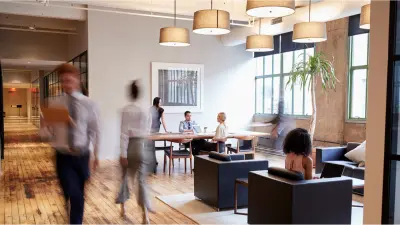
We’re all familiar with the routine: lights out when the sun is shining; blinds up or down to prevent annoying reflections on monitor screens; lights on when evening comes. Ensuring exactly the right lighting at our workplaces is a never-ending process that requires constant reassessments. All too often, unfortunately, we don’t immediately notice when it needs adjusting. As a result, we get tired eyes or lose concentration. Light, or the lack of it, is a crucial factor that can positively or negatively affect our wellbeing in indoor spaces.
How does light affect us?
Apart from the vital function of enabling us to visually perceive our surroundings, light has another effect: it influences our mood. Exactly how depends on how it alters the indoor ambiance and distribution of brightness. If it’s too harsh or too dim, it can stress us. If, however, it’s harmoniously distributed it evokes an ambiance in which we subconsciously feel good. It’s a less-known fact that different kinds of light can also affect our biological functions: cold white light energizes us, while warm white light relaxes us.
Focus on people
Today’s advanced building technologies and systems revolve around a principle called “human-centric”. This involves consistently taking a human perspective across all steps of problem-solving processes. It helps increase individuals’ wellbeing, increases user satisfaction, and improves sustainability. It also offsets any negative effects on human health, safety, and performance. Building planners and operators are therefore now developing healthy buildings that enhance the wellbeing of all users. Aspects including architecture, heating and air conditioning, ventilation, colors, and lighting are considered right from the initial planning phase and optimized with this goal in mind.

How light affects productivity
Light has been shown to influence people’s productivity and performance. Lighting systems that follow a circadian pattern support our biorhythms and boost our performance. When properly nuanced lighting is optimally implemented, it can improve working conditions by up to 28%. How can this potential be fully tapped?
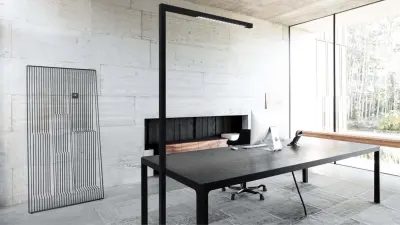
What are advanced light sensors good for?
Many lighting scenarios can be optimized by cleverly combining lighting technology and room automation. Motion sensors are already being widely used to detect when people enter rooms. Yet sensors are capable of much more: for example, they can measure the amount of daylight entering from outside and appropriately adjust the intensity of a room’s lamps in response. They can also capture parameters such as temperature, relative humidity, CO₂ content, fine dust, and other contaminants in the air. These “multi sensors” are integrated in luminaires and are completely inconspicuous as a result. “The best sensors are the ones you don’t see,” states Christoph Link, a lighting expert and senior application manager at XAL, a company specialized in high-quality, innovative lighting systems. “Lamps are already able to recognize specific profiles, which makes it possible to track persons inside a building via an indoor GPS system. Luminaires constitute an infrastructure of their own inside a building and are therefore ideally suited for integrating sensors.”
Smart lighting systems can also support trends such as space optimization, desktop sharing, and coworking. Many companies have already introduced tools for flexibly booking workplaces. When a worker reserves a workplace, sensors integrated in the lamps can detect their IP address and adjust the lighting to suit their personal preferences.

Light is never simply brightness. We distinguish light for seeing, light for looking, and light for watching.
New technologies ensure a better lighting ambiance
For optimizing the ambiance inside buildings, ever-greater importance is being attached to their technical systems. Acoustically optimized rooms, a pleasant indoor temperature, a sufficient supply of fresh air, and lots of natural light all help make people feel better in buildings. “In most cases, we’re still used to unvarying color temperatures in the office or at home, for example neutral white at 4000 K as the standard in offices or the warm light at home that we enjoy so much during the evening,” explains Christoph Link. “Now new technologies are opening up the possibility of dynamically varying the color temperature. This overcomes the rigid standards, working with artificial light as an additive component instead. It opens up the possibility of varying the color temperature in response to the outdoor light situation or one’s mood. And all this can be achieved with a simple app-based controller that either works automatically or can be flexibly adjusted as appropriate.”
Better-quality light with lower energy costs
“It’s impossible to overestimate the value that well-planned lighting adds. Light is what brings rooms to life! It’s never just about brightness. We distinguish among light for seeing, light for looking, and light for watching. Because our perceived wellbeing increases with well-planned lighting, increasing importance is being attached to this aspect. It’s easy to illustrate with a simple example. Consider an office room that’s illuminated in two different ways. In version 1, the ceiling is illuminated by light panels that provide the brightness level prescribed by the applicable standards for workplaces. But the resulting ambiance is a total catastrophe; we’re sitting here in a homogeneous, purely functional sea of light that completely lacks any points of reference. Now consider version 2: each desk has its own lamp that harmonizes with the furniture. A mixture of direct and indirect lighting supports perception of the room’s height. There are also lamps that accentuate objects in the room and evoke a pleasant ambiance. Well-planned lighting strikes a balance between light and shadow within the scope of the relevant standards.” This also applies to new and remodeled or refurbished buildings. As a result of technological advances that make it possible to individually address lamps and wirelessly control them using radio signals, now it’s also feasible to illuminate older buildings with outdated electrical systems so that they comply with new standards. “An important factor in connection with older buildings is the fact that installing new, automated lighting systems can generate major energy savings. This is a first step for switching from analog luminaires to LEDs. And if this is also combined with room automation, the potential energy savings can amount to as much as 60%,” says Link. Remote maintenance of lighting systems additionally enhances the comfort level while saving even more resources.
The right lighting for every need
Flexible, appropriate, and beneficial: depending on the type of building and how it’s used, indoor lighting quality can be improved in appropriately tailored ways. It’s not just about optimizing vision; emotional and biological factors also play a role. A combination of highly accurate color reproduction and dynamic lighting are the basis for natural-looking, energy-efficient approaches that can be flexibly supplemented with other components. For example, it makes sense to use biologically stimulating lighting in conference rooms to promote concentration and attention, alternating with dimmed and focused light for presentations. In airport terminals and other public buildings, it’s about providing orientation, which can also be supported by appropriate lighting. In industry, safety is a high-priority goal that can be achieved with optimal lighting. At schools and universities, appropriately adjusted lighting for different subjects can promote students’ creativity or concentration, to take just two examples. “We’re eager to see how this field will continue to evolve as users accept these new lighting approaches and artificial intelligence and flexible personalization open up new perspectives.”
A room shown in four different kinds of light: these lighting scenarios evoke very different atmospheres.
-

-

-

-

© XAL
Portrait of Christoph Link
Christoph Link is a senior application manager at the company of XAL (Xenon Architectural Lighting). He has worked in the field of interior lighting for professional applications for over two decades. After studying interior architecture and then working for independent light planning offices, in 2006 he joined the lighting industry as an lighting expert specialized in application management.
XAL GmbH
The success story of XAL began over 30 years ago. Since then, the company has worked with lighting designers, architects, and planners to develop customer-specific, state-of-the-art lamps that excel with their style and esthetics. Based in Graz, Austria, the XAL Group now employs 1,300 people worldwide and has 30 subsidiaries around the globe. For retail outlets selling world-class brands, modern offices, exclusive hotels, restaurants, and private homes, XAL supports customers worldwide for planning and implementing lighting concepts.
